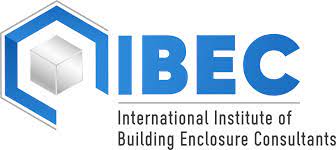Book Time With Our Experts
Looking for a unique perspective on building and materials science education?
We’re available to speak or present at:
- Meetings
- Conference Keynotes
- Seminars
- Continuing Education
Standard presentations and seminars are listed below.
Want something custom? Let us know!

Presentations & Seminars
Here are a few examples of presentations that we offer regularly:
Cladding Attachment Systems: The Effects of Fasteners on Thermal Performance
Examines thermal effects of fasteners and compares these effects to those of cladding attachment systems, other thermal bridges, and even convective forces. Heavy on 3D thermal modeling.
Integrated WRB Panels: Extraordinary Claims Demand Extraordinary Methods
This presentation pokes at WRB panels, taking a deeper dive into what doesn’t work, why it doesn’t work, and how to make it work. This one emphasizes rogue testing and the need for testing approaches/criteria that exceed, but run parallel to, existing ones. Learning objectives include;
- Understand the fundamental differences between integrated and integral WRB panels.
- Describe the limitations of applicable testing methodologies for WRBs and specifically integrated WRB panels.
- Appreciate the importance of evaluating the WRB Panel as a whole system rather than an amalgam of separate parts.
- Understand the principles of predictive value in product evaluation.
- Most importantly, the attendees will learn how WRB panels work and how they don’t.
Comparing SIP Performance When Configured with Housewraps, Building Papers, and Semi-Permeable Fluid-Applied Polyethers
This presentation compares SIPs performance when configured with housewraps vs building papers vs semi-permeable fluid-applied polyethers. It’s a three-way cage match with some very interesting outcomes. Also addressed is the enigma that is the SIPs joint. Convention has it that somewhere within Climate Zone 4, and beyond the Mason Dixon line, wall joints are treated on the exterior side of the panel rather than the interior. But no one knows exactly where nor why. This presentation simplifies matters with some creative simulations and lively discussion.
Resilient Barrier Systems: A Systems Approach to Air and Water Barriers
The Air and Water Barrier is a system. It is comprised of materials having a common role of continuity and a common namesake purpose. While its importance in resilience is undeniable, the system’s proven performance is too often inferred, not tested. And when tested as an assembly, what we really test is their installation, not their inherent attributes as a collective whole. True resilience demands more. Predictive value of the AWB System must account for conditions that are not completely known, installation practices having reasonable variances, and durability that spans many decades. High predictive value cannot emerge from simply emulating expected service conditions or even extremes that might befall fully exposed assemblies. Therefore, test methodologies must reflect greater rigor, longer duration, and increased resolution. Otherwise, buildings become our proving grounds, and resilience is left unfulfilled. AWB components must be optimized and synergized. Their interfaces must resist air and water reliably and robustly. The system must be tested and proven as an integrated whole. And this whole of performance must meet new demands in extremes.


